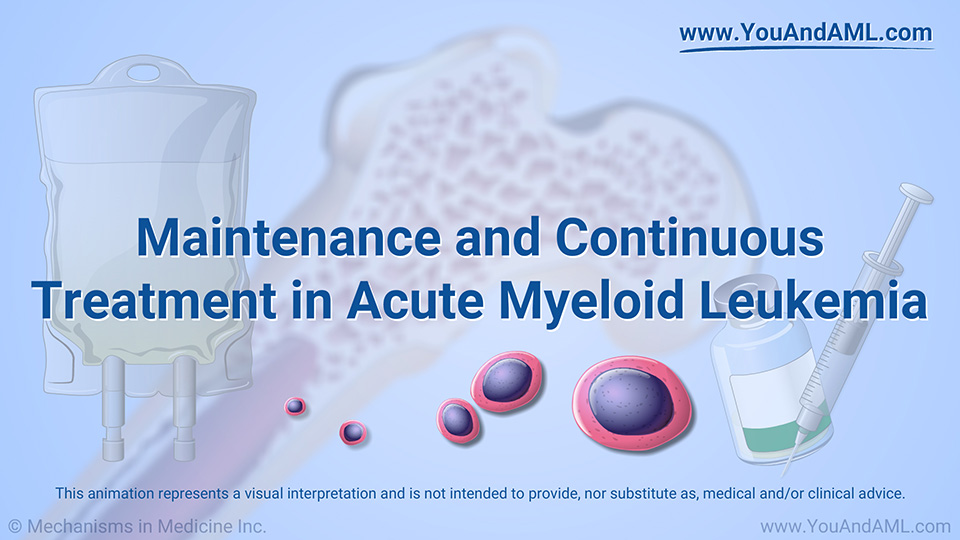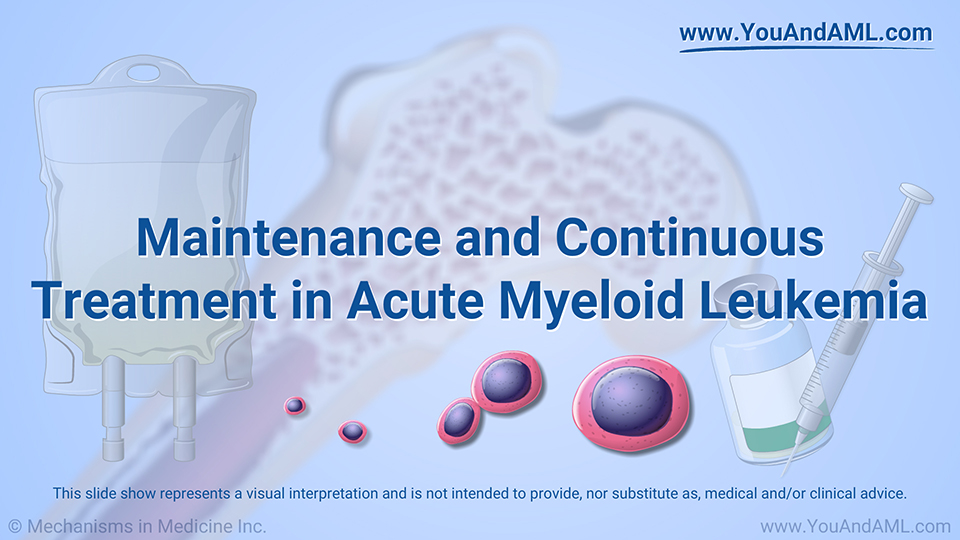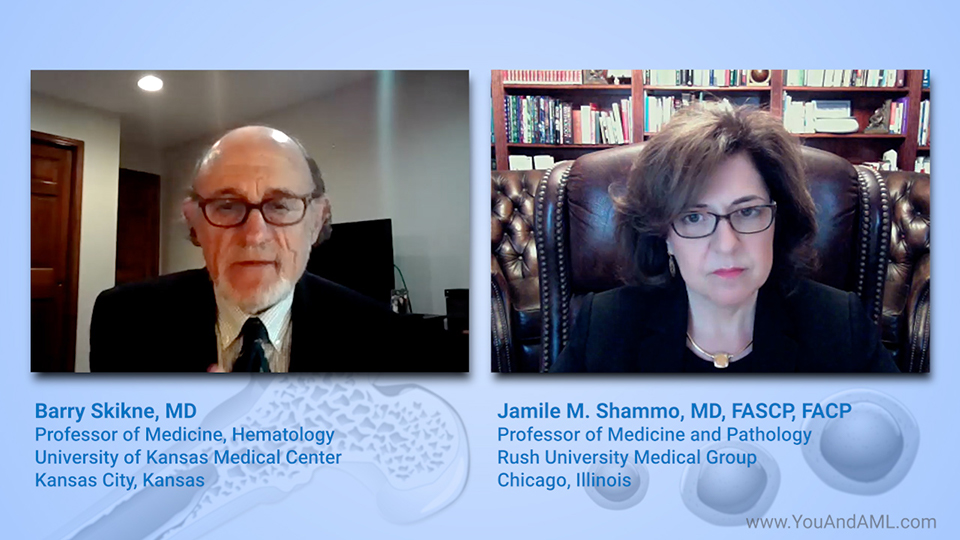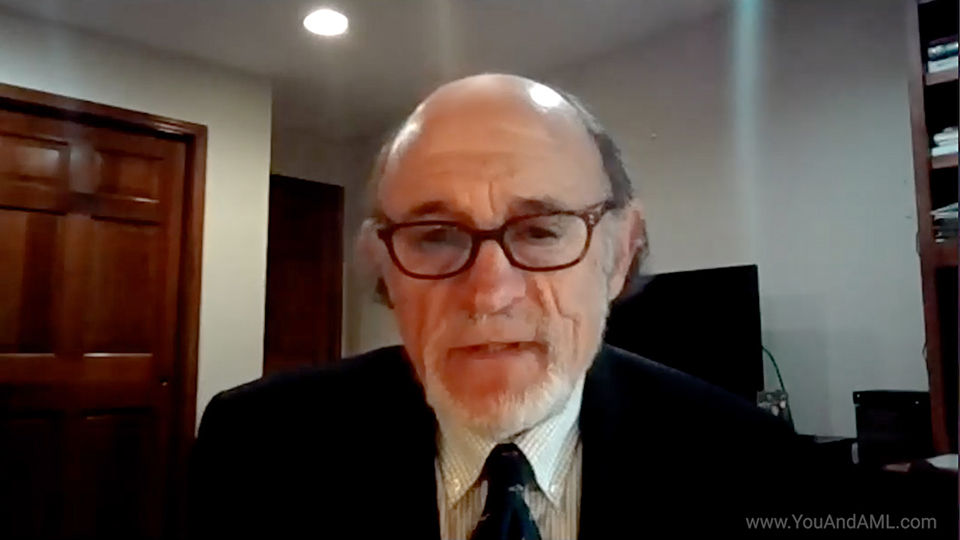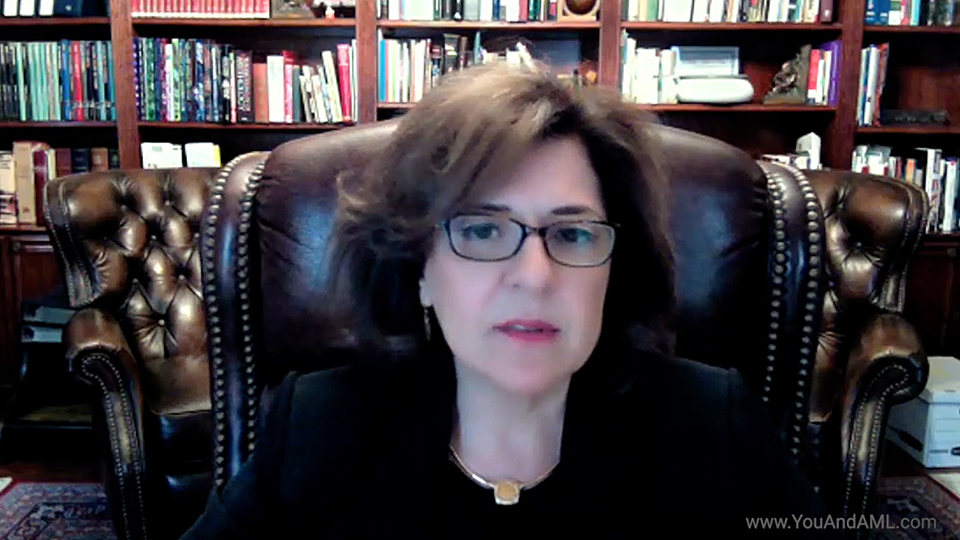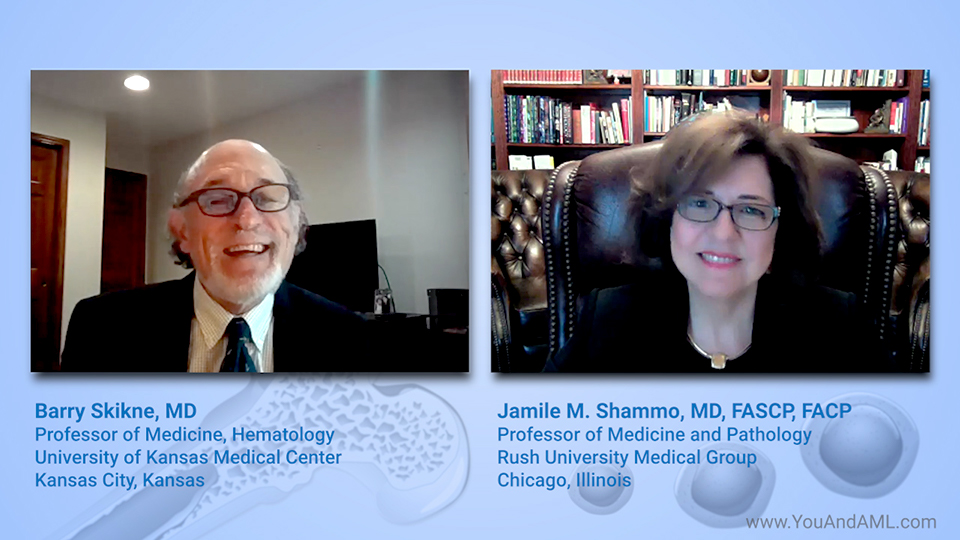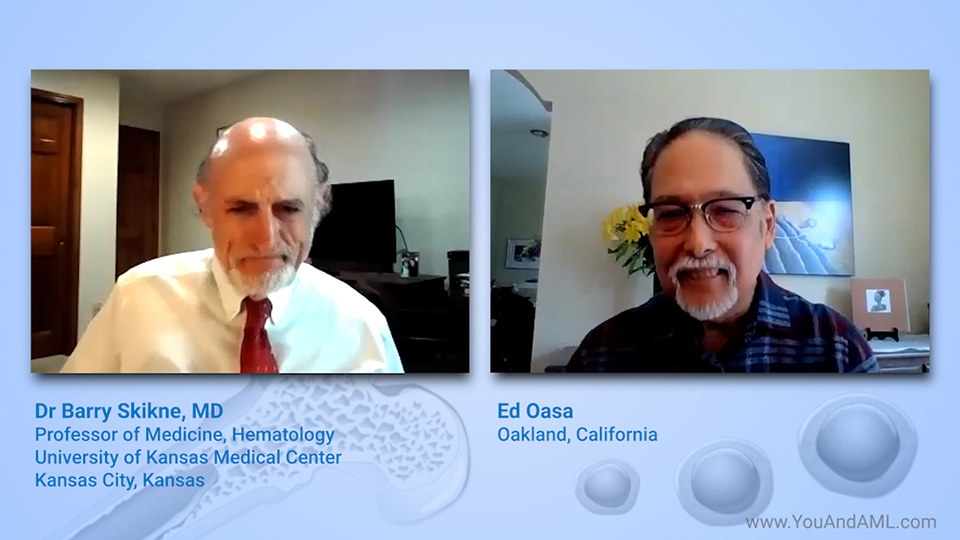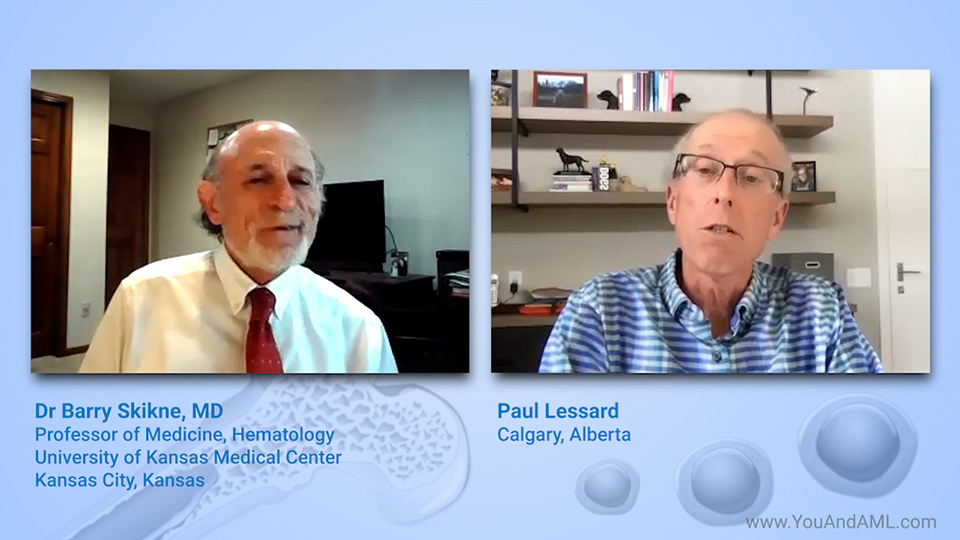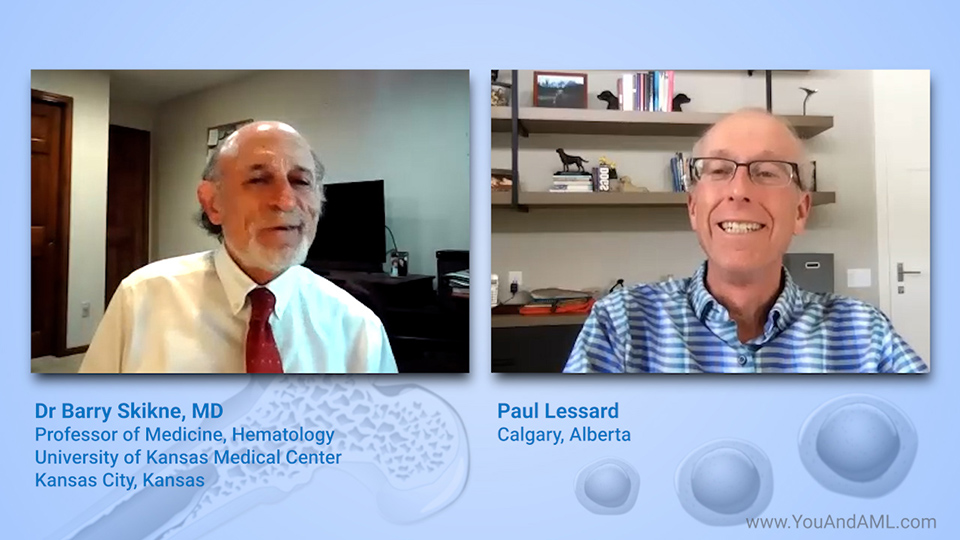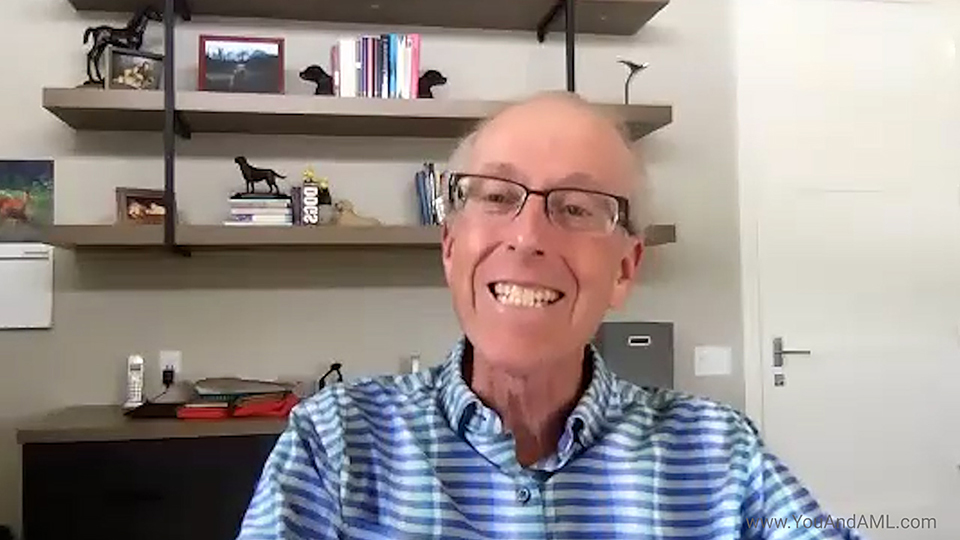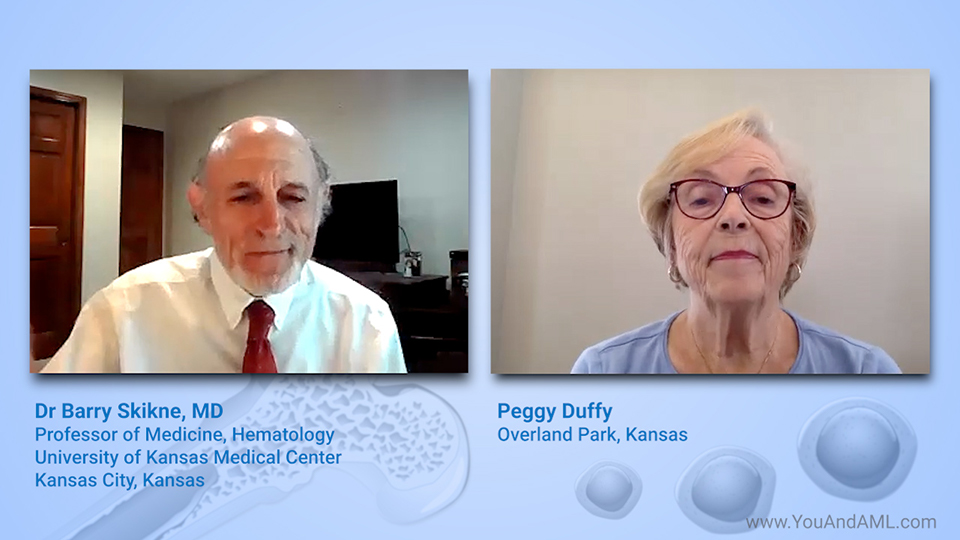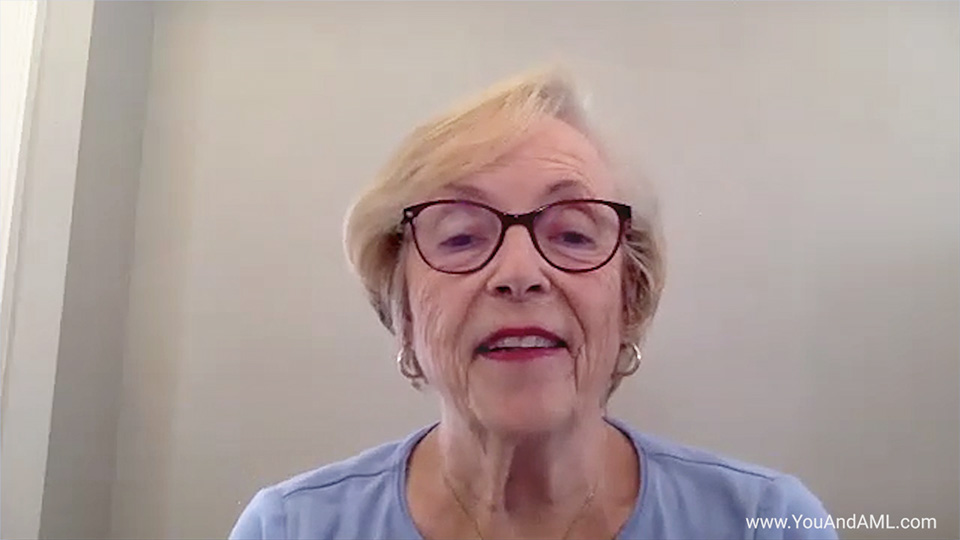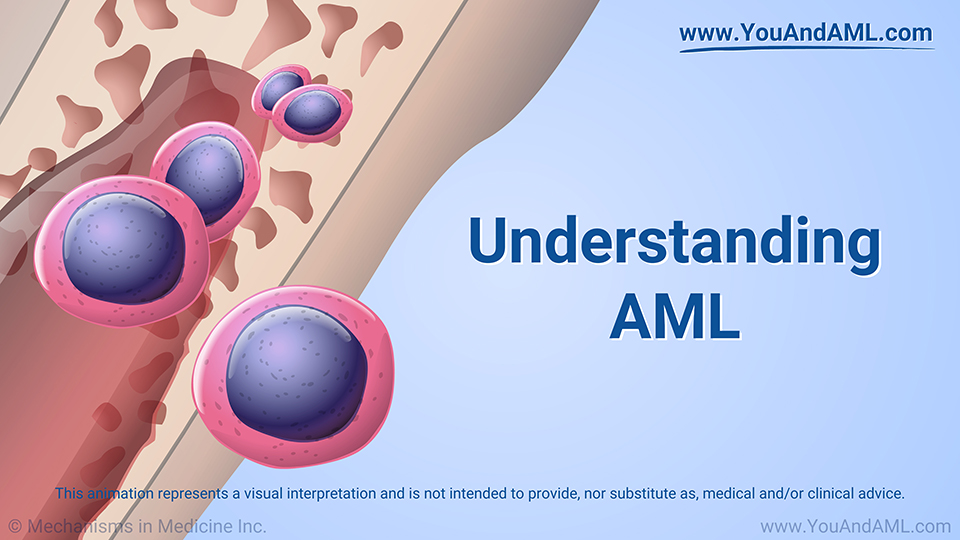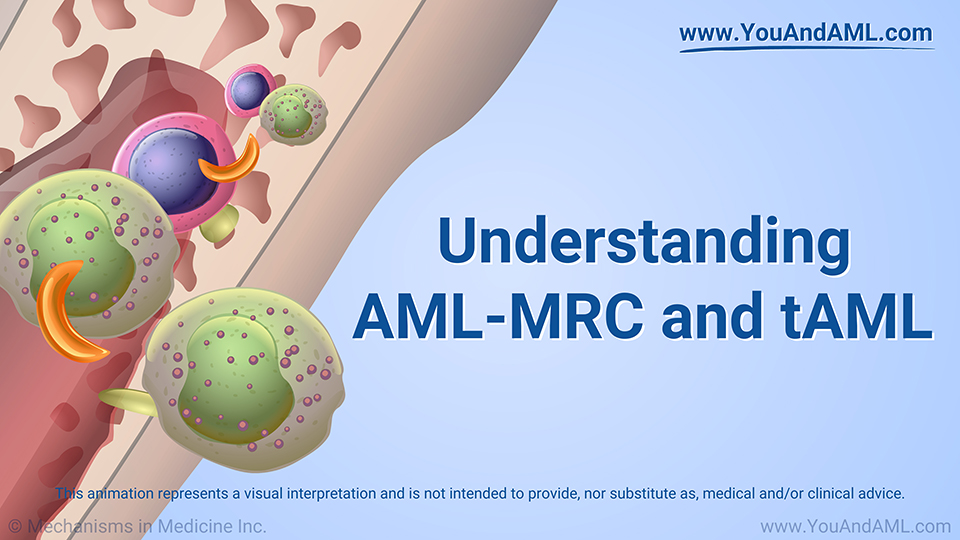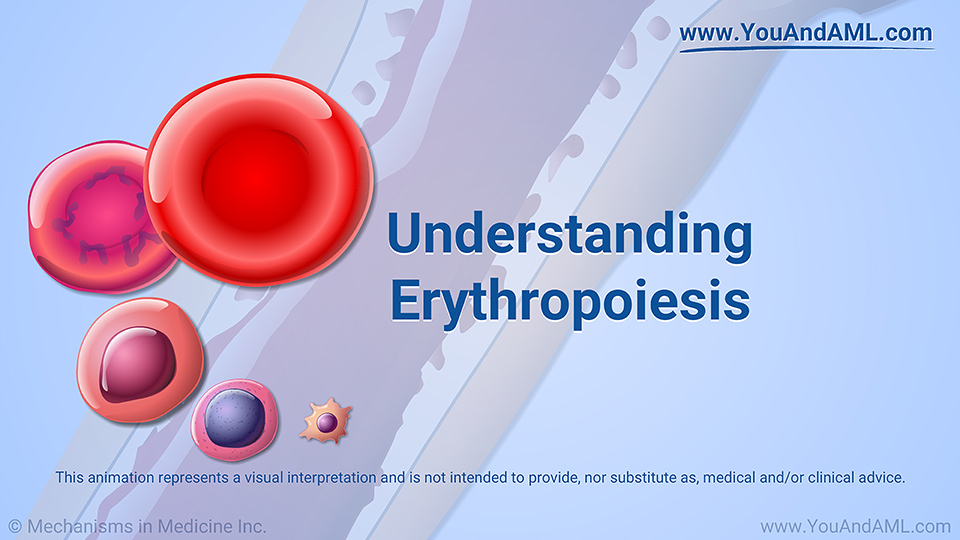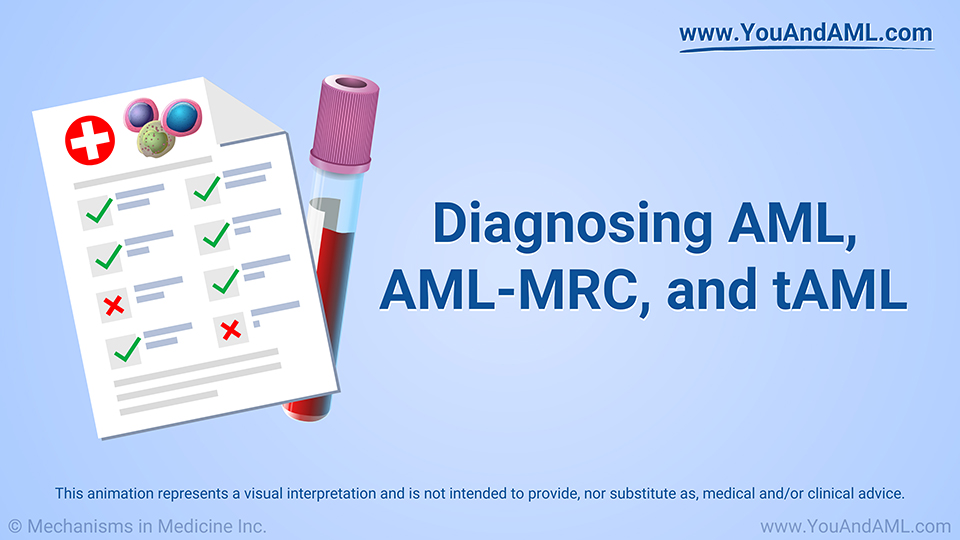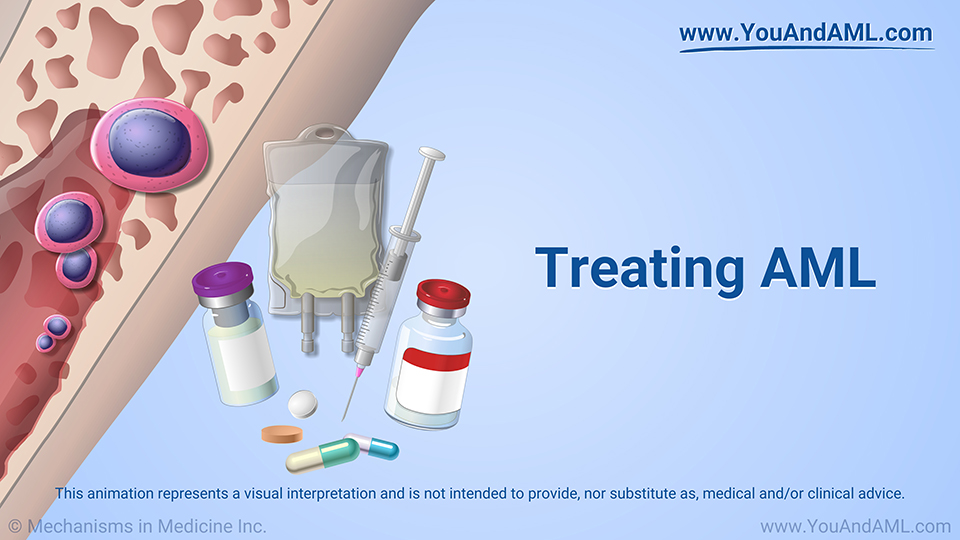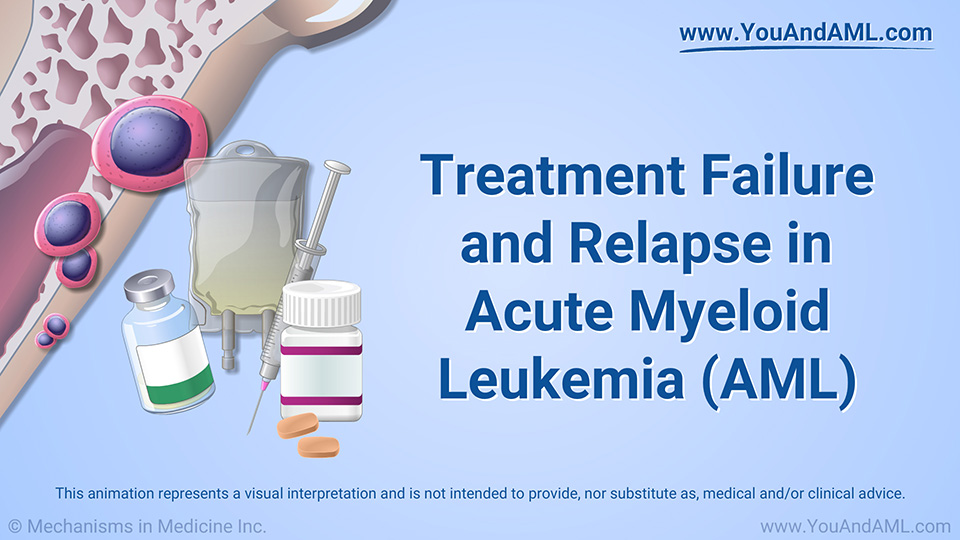Maintenance and Continuous Treatment in Acute Myeloid Leukemia
*Please note: This slide show represents a visual interpretation and is not intended to provide, nor substitute as, medical and/or clinical advice.
What are the 3 common phases of AML treatment?
The 3 phases of AML treatment for many people are induction, consolidation, and maintenance.
Induction is designed to put AML into remission, meaning less than 5 percent immature, leukemic cells in the bone marrow.
Consolidation is designed to kill any leukemia cells left behind in the body. If any are found, this is called minimal or measurable residual disease.
Maintenance chemotherapy after consolidation may help keep AML from coming back by killing more leukemic cells or keeping them to a low level.
What is treatment failure in AML?
Treatment failure occurs when your AML treatment is not successful in eliminating all the leukemia from your bone marrow after initial therapy, also known as induction chemotherapy.
What is complete remission in AML?
Complete remission occurs when myeloblasts (leukemic cells) represent less than 5 percent of the cells in your bone marrow when examined under a microscope. It also means that your blood counts have met certain parameters that are near normal.
Why is complete remission less common in older adults?
Adults over 60 are less likely to experience complete remission. They may not be healthy enough for the intensive induction and consolidation treatment regimen. They may have an aggressive type of AML or other conditions that keep them from receiving intensive chemotherapy. And they may not be candidates for a stem cell transplant, currently the best treatment to cure AML.
How induction treatment works
Induction treatment is chemotherapy with powerful drugs or drug combinations. It kills the leukemia cells, but also most of the residual healthy cells. Other strong medicines are needed to prevent or treat infection and possibly control side effects of the treatment.
Induction is followed by consolidation treatment
Induction is followed by consolidation treatment with other drugs or different doses of the original drugs, to kill remaining leukemia cells.
What is maintenance therapy for AML?
Maintenance therapy is additional chemotherapy after induction and consolidation therapy has led to remission. It may help prevent relapse or prolong the remission and help people live longer.
Maintenance therapy for adults over 60 or in poor health
If you cannot have the most intensive treatment commonly used in induction and consolidation due to age, other health conditions, or for other reasons, maintenance therapy may be an option. Many clinical trials are testing new drugs for maintenance therapy.
Maintenance therapy drugs
Azacitidine is one maintenance therapy drug that helps patients live longer without AML relapse.1 Clinical trials have shown it is helpful for people 55 and older. There are different versions – pill and injection – that work differently in the body.
Maintenance therapy drugs
Decitabine2 is another maintenance therapy drug that may help some patients with AML live longer without relapse.
Drugs for specific types of AML
Some therapies are approved to treat people with certain lineage maturation markers. For example, gemtuzumab ozogamicin is sometimes used in induction treatment or after a relapse for people with the CD33 marker on their AML.
Drugs for specific mutations
Enasidenib3 can help people with a mutation called IDH2, and ivosidenib4 can help people with the IDH1 mutation. Gilteritinib5 and midostaurin6 can be used to treat people with a FLT-3 mutation. Doctors must always test the bone marrow for these and other chromosome abnormalities and gene mutations.
Ask about clinical trials
The list of AML maintenance options for older adults, people with certain genetic mutations, and people who cannot tolerate the most intensive treatments is growing. Ask your doctor about clinical trials of these drugs.
Treatment is your choice
If you do not experience remission or choose not to continue treatment, you still have options. You and your doctor can create a treatment program that helps you feel as well as you can for as long as possible.
Talk to your doctor about treatment options
Depending on your AML and general health, some therapies may help keep your AML stable and prolong your survival even if you still have AML, provided you still have some healthy bone marrow cells.
References
-
Burnett A, Russell N, Freeman S, et al. A comparison of limited consolidation chemotherapy therapy or not, and demethylation maintenance or not in older patients with AML and high risk MDS: Long term results of the UK NCRI AML16 trial. Haematologica. 2015;100(S1):194. Abstract S513.
-
Pusic I, Choi J, Fiala MA, et al. Maintenance therapy with decitabine after allogeneic stem cell transplantation for acute myelogenous leukemia and myelodysplastic syndrome. Biol Blood Marrow Transplant. 2015;21(10):1761-1769.
-
Stein EM, DiNardo CD, Pollyea DA, et al. Enasidenib in mutant IDH2 relapsed or refractory acute myeloid leukemia. Blood. 2017;130(6):722-731.
- DiNardo CD, Stein EM, de Botton S, et al. Durable remissions with ivosidenib in IDH1 - mutated relapsed or refractory AML. N Engl J Med. 2018;378(25):2386-2398.
-
Perl A, Martinelli G, Cortes J, et al. Gilteritinib significantly prolongs overall survival in patients with FLT3-mutated (FLT3mut+) relapsed/refractory (R/R) acute myeloid leukemia (AML): Results from the Phase III ADMIRAL trial. HemaSphere. 2019;3(S1):392-393.
-
Stone RM, Mandrekar SJ, Sanford BL, et al. Midostaurin plus chemotherapy for acute myeloid leukemia with a FLT3 mutation. N Engl J Med. 2017;377(5):454-464.
This slide show provides an overview of
maintenance and continuous treatment for
acute myeloid leukemia (
AML).
Maintenance therapy is additional chemotherapy after induction and consolidation therapy has led to remission. It may help prevent relapse or prolong the remission and help people live longer. You can learn about the three common phases of AML treatment (
induction,
consolidation, and
maintenance) as well as treatment options that are currently available. Depending on your AML and general health, some therapies may help keep your AML stable and prolong your survival even if you still have AML, provided you still have some healthy bone marrow cells. It's important to
discuss all treatment options with your doctor or cancer care team, so you can make the best decisions that are right for you.
-
Share with family and friends:
Click here to take our SURVEY
Your feedback is important to us! We will use your feedback to develop future areas of content about AML which will help other patients, caregivers and families.
